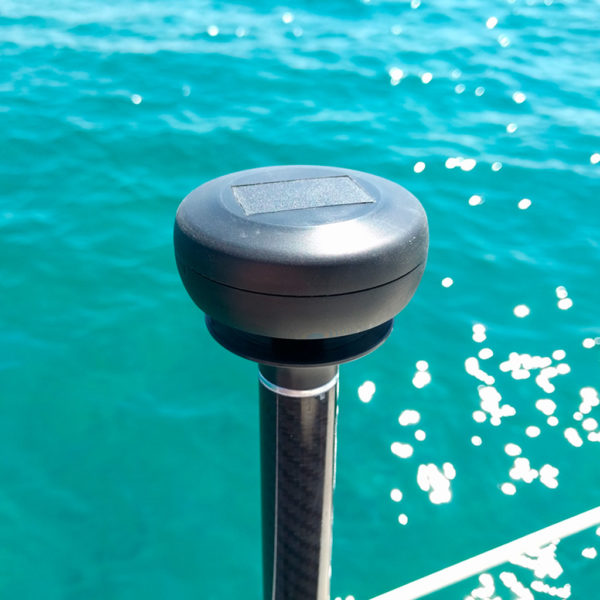 Ultrasonic anemometers-weathervanes for yachting came up just over 15 years old. Among the best known we can cite those of the American Airmar and French LCJ Sensors. Equipped with sophisticated electronics, these sensors without moving mechanical parts have the double advantage of being much more robust than traditional sensors, and provide much more precise data. They can also integrate other sensors as a barometer, gyroscope, electronic compass and sometimes even GPS.
Ultrasonic anemometers-weathervanes for yachting came up just over 15 years old. Among the best known we can cite those of the American Airmar and French LCJ Sensors. Equipped with sophisticated electronics, these sensors without moving mechanical parts have the double advantage of being much more robust than traditional sensors, and provide much more precise data. They can also integrate other sensors as a barometer, gyroscope, electronic compass and sometimes even GPS.
The first ultrasonic sensors were equipped with a cable for power and data transfer. The manufacturer LCJ Sensors, building on the success of its CV3F sensor marketed since 2001, designed the CV7SF range, wireless models whose data is transmitted over a radio frequency to a receiver which converts it to NMEA (0183 or 2000). Power is supplied by solar cells on the sensor cap, and different output connection interfaces are offered depending on the models.
A new actor, Spanish Calypso Instruments, has just designed a completely new concept wireless sensor, the Calypso Ultrasonic Portable, whose characteristic is to be featured with a Bluetooth Low Energy Transmission Protocol (Bluetooth 4.1), which offers many advantages.
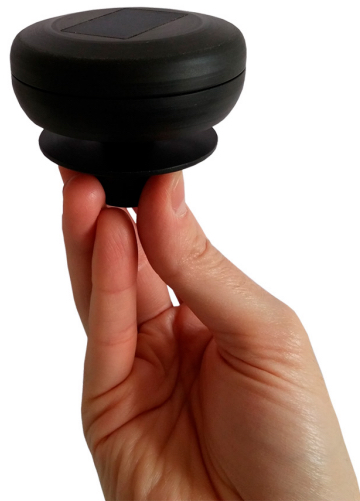 This ultralight miniaturized sensor, Self-put forward by its inlaid solar panel, is attached to a specific mattress compatible with antenna supports 1″1/4. Ideal for storage at the end of the season, for dismaying or even transportable boats and motorbikes. IPX8 Waterproof, thus 30 minutes to 10 meters deep, it fears neither capsizes dinghies or sport catamaran flips. The theoretical scope is about 50 meters high, amply sufficient for the mast height of most of our boats !
This ultralight miniaturized sensor, Self-put forward by its inlaid solar panel, is attached to a specific mattress compatible with antenna supports 1″1/4. Ideal for storage at the end of the season, for dismaying or even transportable boats and motorbikes. IPX8 Waterproof, thus 30 minutes to 10 meters deep, it fears neither capsizes dinghies or sport catamaran flips. The theoretical scope is about 50 meters high, amply sufficient for the mast height of most of our boats !
The device is provided with several electronic sensors in addition to the ultrasonic wind sensor : thermometer, magnetic compass, Gyroscope and accelerator. The data is transmitted in Bluetooth it to all smartphones and tablets with, either application AnemoTracker : ![]() Either of an application developed specifically, which is the case with Weather4D Routage & Navigation. Indeed the manufacturer offers developers an SDK (Development kit) allowing to process the data issued via Bluetooth, support that has just completed Olivier Bouyssou. Finalized during our September tests, The result is quite stunning.
Either of an application developed specifically, which is the case with Weather4D Routage & Navigation. Indeed the manufacturer offers developers an SDK (Development kit) allowing to process the data issued via Bluetooth, support that has just completed Olivier Bouyssou. Finalized during our September tests, The result is quite stunning.
Weather4D Routage & Navigation and Bluetooth support
This first Bluetooth sensor required the development of a specific user interface, now present in the general "navigation" parameters of Weather4D R&N. Devices (iPhone / iPad) receiving directly via Bluetooth sensor transmission , it just needs to activate the connection to the sensor and data receiving is immediate (see The tutorial, video 4.11 page 119, or directly Connection to Bluetooth instruments on Vimeo).
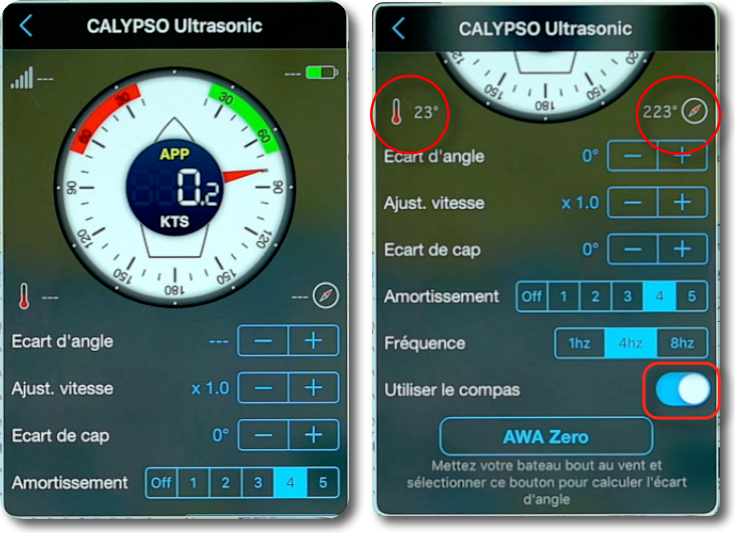 The interface displays the sensor reception quality and its load level. It displays the air temperature and the magnetic course (HDG) If the function has been activated. The application allows fine settings : adjustment of the head line, wind speed, heading deviation. Damping of display for more fluidity, frequency adjustment as needed responsiveness and power management.
The interface displays the sensor reception quality and its load level. It displays the air temperature and the magnetic course (HDG) If the function has been activated. The application allows fine settings : adjustment of the head line, wind speed, heading deviation. Damping of display for more fluidity, frequency adjustment as needed responsiveness and power management.
In addition, Wind data is translated into the NMEA sentence (Mwv) that was added to be sent to the autopilot in "Wind" mode. They are also displayed in application instruments and can be sent to external NMEA repeaters if a Wi-Fi multiplexer or gateway was connected.
This beautiful tool is now marketed by iTabNav.fr at the base price of 399 €, It’s the cheapest on the market. Add 50 € more for the support mast.
–––
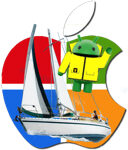

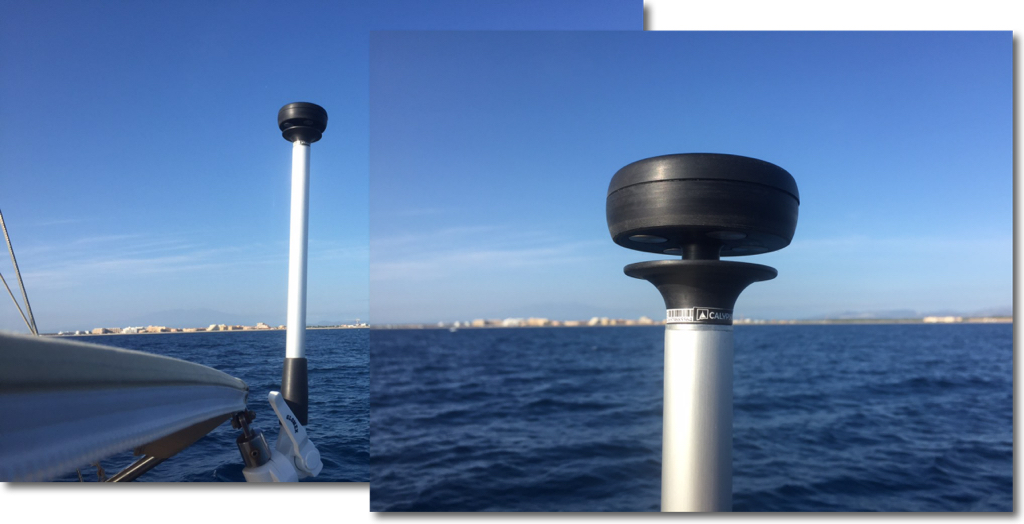
Bonjour,
Does this mean that wind information thus recovered via BT 4.0 sous Weather 4D 2.0 would may be transmitted (accessible in a shared manner in 2 WiFi meaning to Nmea and return) by a WiFi router like XB-8000 to a Seatalkng Raymarine network, which can thus supply data (wind, GPS, navigation, aso) An EV-100 type automatic driver for frank bar sailboats ?
Thank you in advance for confirmation, sportingly,
Marc Lambelin
The answer is yes, But not with an XB-8000, Only the miniplex-3wi-N2K. Indeed Weather4D 2.0 Return the Calypso data in NMEA0183 format (MWV for the wind). Only the MPX-N2K translates on the fly on the outlet the format NMEA0183 in PGN NMEA2000 (Mwv <=> 130306). PGN wind data 130306 are processed by EV-series pilots.